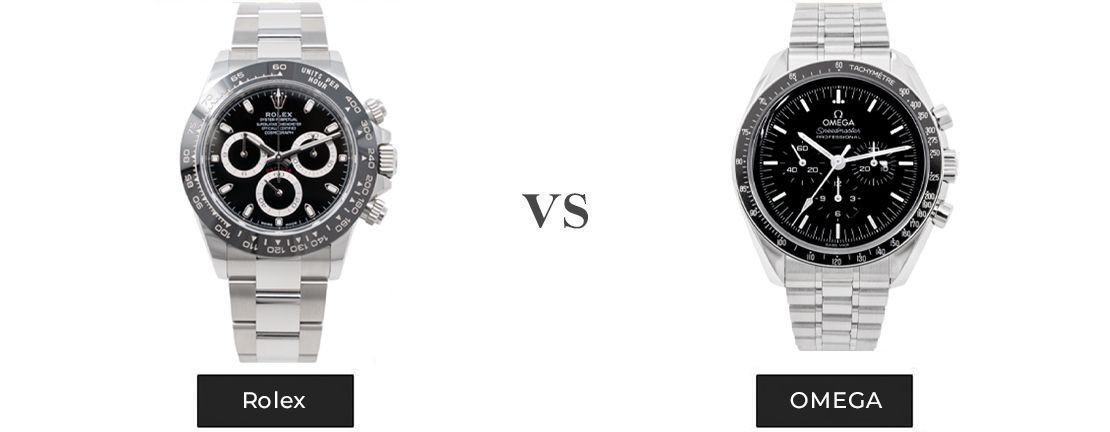Two titans of the Swiss watchmaking industry, both creating stunning timepieces of the highest quality, chief competitors of each other for several decades. If you are looking to invest in either brand, you may be agonizing over the age-old Rolex vVs. Omega debate.
In the following Rolex vs. Omega comparison guide, we aim to make this decision a little easier by analyzing these two behemoths side by side. Hopefully, we can help you decide on the right luxury watch brand for you.
But First, a Caveat
This is by no means a comprehensive, detail-heavy guide brimming with jargon and tech specs.
Our intention is to describe both brands anecdotally and conversationally to help you arrive at a decision based on sentiment and relatability - rather than what type of escapement lubricant is used or the thrilling aspects of a hair spring's oscillation.
That said, let's begin this Rolex vs. Omega guide with a brief overview of both brands' histories.
1. Omega vs. Rolex: Timeline & Key Milestones
Omega
- 1848 – Louis Brandt opens his watchmaking workshop in La-Chaux-de-Fonds, Switzerland.
- 1894 – Renamed OMEGA after the revolutionary OMEGA 19‴ Caliber.
- 1932 – Becomes the Official Timekeeper of the Olympic Games.
- 1965 – NASA certifies the Speedmaster for all manned space missions.
- 1970 – Awarded NASA’s Silver Snoopy Award for contributions to space exploration.
- 1999 – Introduces the Co-Axial Escapement.
- 2015 – Introduces the Master Chronometer standard.
- 2019 – Reintroduces the iconic Caliber 321.
Rolex
- 1905 – Hans Wilsdorf launches a timepiece distribution company in London.
- 1910 – First wristwatch to receive the Swiss Certificate of Chronometric Precision.
- 1926 – Launches the world's first waterproof watch, the Oyster.
- 1931 – Develops the first self-winding movement with Perpetual rotor.
- 1953 – Equips the British Mount Everest expedition with Oyster Perpetual watches.
- 1960 – Deep Sea Special descends 10,916m attached to the Trieste bathyscaphe.
- 1985 – First watchmaker to use 904L steel, known for superior corrosion resistance.
- 2015 – Redefines Superlative Chronometer certification, achieving a precision of -2/+2 seconds per day.
2. Omega vs. Rolex | History
Omega
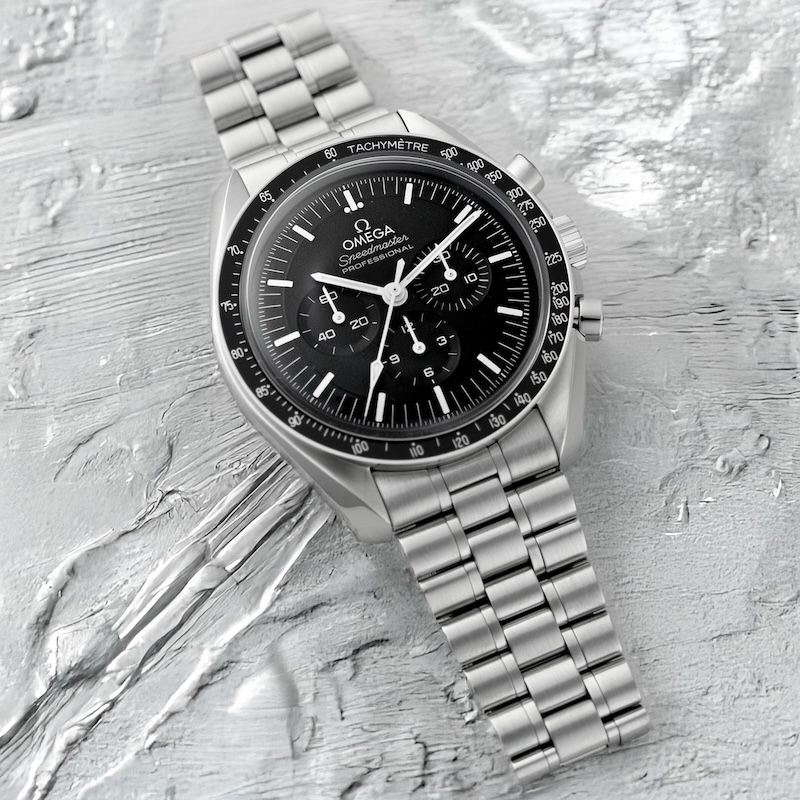

Omega was founded in 1848 when Louis Brandt founded a workshop in the beautiful La Chaux-de-Fonds region. By the late 19th century, Omega had introduced innovative, revolutionary watch movements, such as the 1894 Caliber movement, completely standardizing interchangeable parts in the process.
The brand's innovative efforts continued with iconic models like the Speedmaster, the Seamaster, and the Constellation. They earned the role of official timekeeper for the Olympics and, rather famously, the first watch on the moon in 1969.
In 1983, Omega became a part of the Swatch Group, a move that helped stabilize the brand during challenging times for the watch industry following the brief popularity of quartz watches in the seventies.
Omega now produces approximately 500,000 pieces per year from their factories in Biel and Bienne, Switzerland.
Rolex
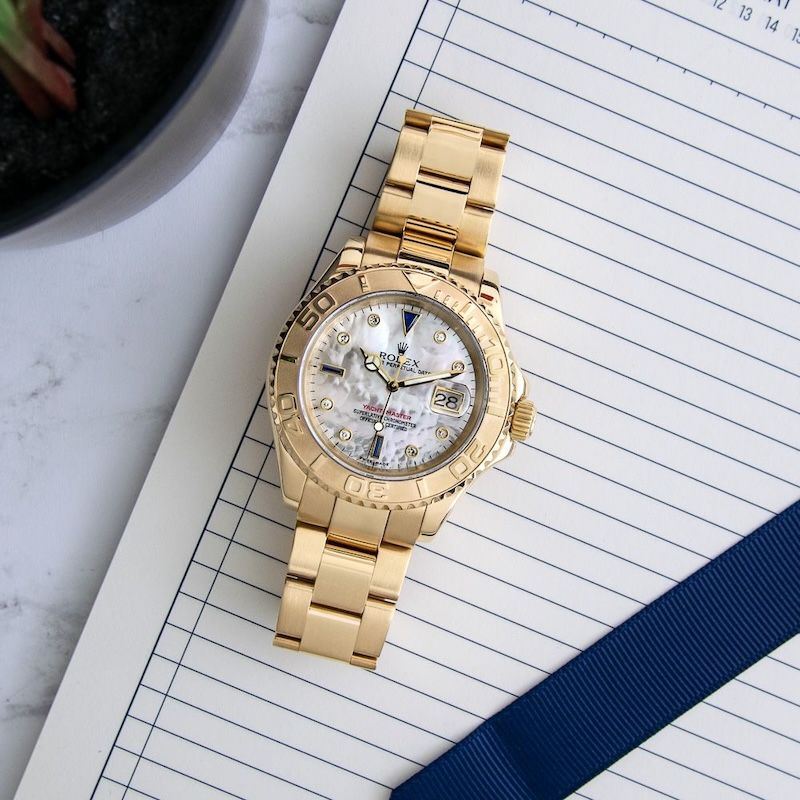

57 years later, Hans Wilsdorf founded Rolex in London before relocating to Geneva in 1919. Also reputed for innovation, Rolex introduced the first waterproof watch (the Oyster) and the Perpetual self-winding movement.
Rolex continued to innovate, launching the now iconic Datejust in 1945, the Submariner in 1953, and the Day-Date in 1956. Interestingly, all three models remain among the brand's biggest sellers to this very day.
As Rolex entered the modern era, innovation continued with gusto, bringing further iconic pieces like the Explorer, GMT-Master, and Daytona.
Rolex now produces over 1 million pieces per year from their factory in Geneva, Switzerland.
3. Omega vs. Rolex | Brand Recognition & Icon Status
Rolex
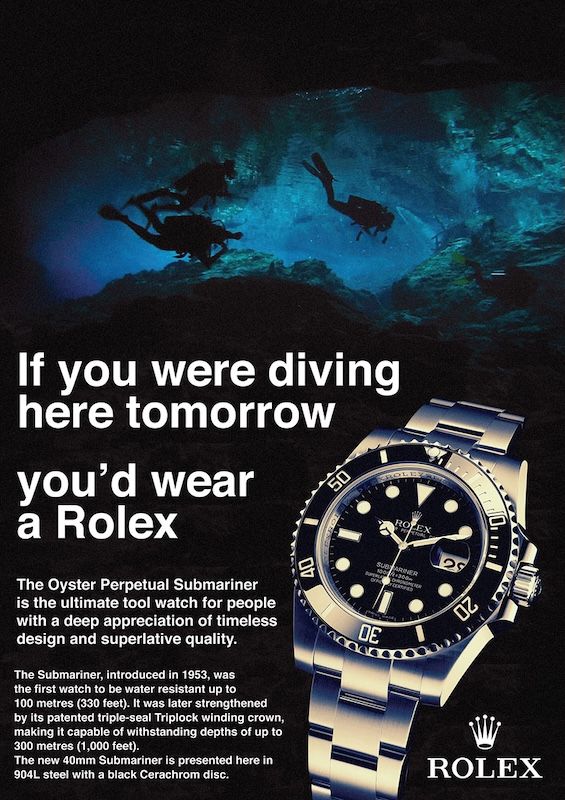

One of the many reasons we are so fond of Rolex lies with the brand's apparent refusal to promote being seen as ‘cool’ in any way; to do so would be considered a pastiche of modern brands, one would presume, with newcomers such as Hublot overly keen to appear fashionable at every opportunity.
Take a look at the Rolex brand ambassadors, for example, and you will find no hedonistic rock stars, edgy sports personalities, or (god forbid) the latest Lamborghini-obsessed social media influencers.
Instead, Rolex calls on squeaky-clean celebrities like tennis superstar Roger Federer to represent the brand.
Effortlessly Cool
Despite this, Rolex is really very cool and completely iconic.
Throw in a waiting list for even the most entry-level of pieces along with a series of celebrity Rolex collectors over the years like David Beckham, Steve McQueen, and Michael Jordan (to name but a few), and you have a brand that oozes ‘cool factor’ without desperately chasing trends or hype.
If you take a moment to consider iconic pieces from other luxury brands - such as Audemars Piguet or Patek, for example - only one or two renowned models will spring to mind (for most people, at least).
Now do the same with Rolex, and several pieces will probably enter your train of thought, some of which include the following icons:
Celebrated Models
- Submariner: The now legendary dive watch.
- Daytona: The ultimate iconic chronograph.
- GMT-Master II: A favorite among pilots, featuring a dual-time zone display for world travelers.
- Explorer: A tough, solid timepiece often associated with mountaineers and explorers.
- Datejust: An elegant classic known for its timeless design suitable for any occasion.
- Day-Date (President): Seen as prestigious, featuring a day and date display in precious metals.
- Sea-Dweller: Built for deep-sea divers for extreme water resistance.
Ultimately, most enthusiasts would likely assert that Rolex is possibly the most revered and aspirational watch brand in the world. Some may do so begrudgingly, but the majority would probably concede it.
When Rolex decided to use a crown emblem for its logo many years ago, it unwittingly chose a symbol that would become quite apt in future decades. It would be hard to view them as anything less than the ‘kings of the watchmaking world,’ a title they would probably find a little distasteful if you were to ask their opinion of it.
Omega


Omega is often seen as the bold, daring counterpart to Rolex. It has a reputation for breaking the mold and dismissing the established rules of watchmaking. In short, Omega is quite a clever bunch of people who make wonderful watches.
While Rolex tends to evolve its designs incrementally, Omega isn’t afraid to unfurl entirely new lines or reimagine old pieces, as evidenced by collaborations like the controversial MoonSwatch, which made headlines (and caused ungodly store cues) for its surprisingly wallet-friendly price. No one saw it coming - and that’s an endearingly typical trait of Omega.
Appeal
Even with its adventurous spirit, Omega’s recognition often plays second fiddle to Rolex’s iconic status. Their vast range of variations can make them less instantly recognizable compared to Rolex’s straight-down-the-middle icon pieces.
Omega’s technological contributions to watchmaking shouldn't be ignored. From pioneering the Coaxial escapement to setting new records in precision (more on that later), its image has nonetheless been overshadowed by Rolex’s more unwavering approach.
Despite this, Omega remains one of the world's largest brands, earned by pushing the boundaries of watchmaking that few brands can match.
Celebrated Models
- Speedmaster: Known as the first watch on the moon.
- Seamaster: The favored watch of James Bond, no less.
- Constellation: Renowned for its precision and vintage appeal.
- Ploprof: A unique dive watch with a distinctive design.
- De Ville: Offering a dressier alternative within Omega's lineup.
- Railmaster: A nod to Omega’s historical connection to railway workers.
Ultimately, Omega’s journey in watchmaking has been nothing short of remarkably impressive, even if somewhat eclipsed by Rolex’s towering presence.
4. Rolex vs. Omega | Movements
Rolex and Omega have both taken a rather unique approach to the engineering of their movements.
Rolex is rather proud of its in-house development, and rightly so—it is a notable achievement. Over the years, they have doubled down on precision and durability, using proprietary innovations like the Chronergy escapement and Parachrom hairspring.
Its movements are all COSC certified and then further tested in-house, pushing Rolex's accuracy to a remarkable -2/+2 seconds per day.
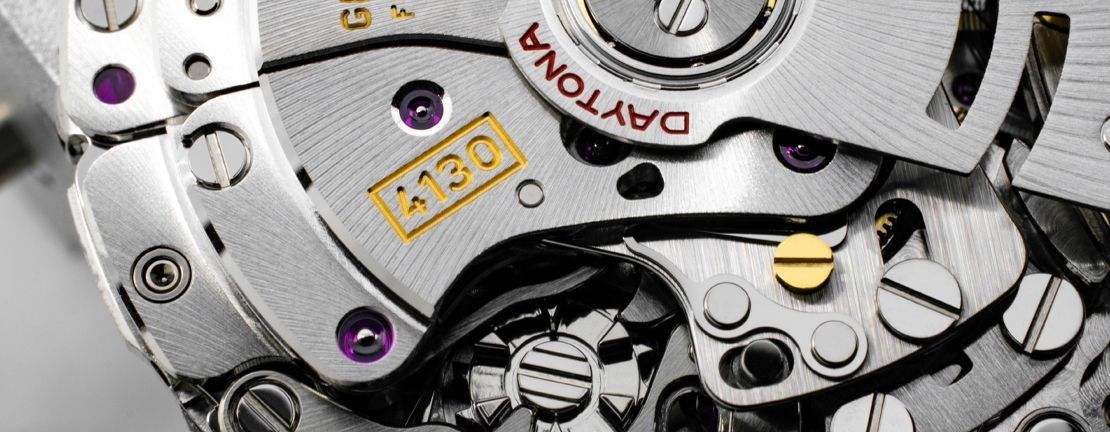

By the same token, Omega has its own bragging rights with the Coaxial escapement - a genius bit of engineering that reduces friction and improves accuracy. The movements of both brands offer remarkable reliability, but Omega's unique approaches to design give enthusiasts plenty to argue about in the whole Rolex or Omega debate.
Water Resistance
Rolex and Omega both take water resistance very seriously, with each brand offering various options for serious divers and casual wearers. Rolex’s Submariner and Sea-Dweller are probably the most trusted and well-known by professional divers, handling depths up to 1,220 meters.
However, everyday models like the Datejust and Day-Date also deliver a respectable 100 meters. Made famous by James Bond, Omega’s Seamaster offers up to 600 meters on some models, featuring innovative details like the helium escape valve.
Warranty
Rolex and Omega both offer a five-year warranty. Rolex’s extensive in-house testing ensures reliability, while Omega’s warranty backs its Master Chronometer certification, promising precision and resilience. Both brands have a solid reputation for providing strong support for their timepieces.
5. Rolex vs. Omega | General Quality & Brand Ethos
Quality Overview | Rolex
In broad terms, the significance of a ‘Swiss-made’ designation may seem slightly misleading to some. To achieve this celebrated status, less than two-thirds of a watch must be engineered inside Switzerland.
Rolex takes matters far more seriously by manufacturing and assembling every single part inside its Geneva factories, meaning its watches are manufactured and assembled ‘in-house’ in the purest sense of the word - a feat that is reflected in the quality of their pieces.
Remarkably, Rolex even has its own foundry. This allows them to build metal components (including the precious variety) from pure liquid molten. This has also enabled them to produce their own 904L steel, far tougher than the industry benchmark 316 steel variety used by many luxury watch manufacturers.
Pure Swiss Watchmaking
Essentially, Swiss-made doesn't always speak to the real, full sense of the word, considering that 40% of a Swiss watch can be made outside of Switzerland.
Not so with Rolex, which is 100% Swiss. Metaphorically speaking, if you were to cut open a Rolex with a sharp knife, it would bleed 100% pure Geneva.
Rolex is also outrageously skilled when it comes to gem setting - as evidenced by pieces such as the Pearlmaster - painstakingly setting each and every gem, ruthlessly selecting just one in ten gems as worthy.
Precision
All Rolex watches are certified for precision by the COSC, a Swiss organization that measures accuracy. Once again, Rolex takes things a little further by asserting its own version of the COSC in the form of its in-house self-devised Superlative Chronometer accuracy testing standard.
The upshot of all this is a timepiece that is officially accurate to plus or minus two seconds per day. No other mechanical watchmaker offers this same level of accuracy.
Quality Overview | Omega
We could raise plenty of anecdotal points that speak to Omega's level of quality over the years, but the ultimate signifier could be offered with one magnificent fact: Omega timepieces were considered good enough to grace Buzz Aldrin's wrist as he stepped out onto the moon in 1969.
Armstrong left his watch inside the capsule in case Aldrin’s watch malfunctioned in the extremely hostile lunar environment. It didn't.
Contrary to popular belief, this was far more than a clever marketing gimmick. NASA insisted on executing a wide range of tests on a small group of timepieces before selecting the Speedmaster as their chosen moon watch.
ETA Connection
Despite a short blip in which Omega sourced many of its parts from Swatch Group's ETA (a fate that was not uncommon for many luxury brands at one point), Omega has been gradually restoring normal order by making most of its parts in-house. They are unable to make the same claim as Rolex who can proudly boast of 100% in-house movements, but they are certainly not far behind in that respect. At the very least, most parts are made in-house, with the exception of a few watches in the range that use pure ETA movements.
Master Chronometer
Either way, Omega watches are incredibly well-made and have a sterling reputation. At one point you might even say they became the envy of many other Swiss watch brands on launching their (frankly quite genius) co-axial escapement just before the turn of the last millennium.
Similarly to Rolex, Omega is also OSC certified, with the standard Master Chronometer certification promising an accuracy of 0/+5 seconds per day (although +1 seconds per day is a more typical measurement). In addition, they adhere to official METAS quality standards that include a thorough batch of testing against magnetic fields, water resistance, and power reserve.
Omegas without the Master Chronometer seal offer accuracy of -4/+6 seconds per day, still well within the COSC chronometer standard.
6. Rolex vs. Omega | Which Is the Better Investment?
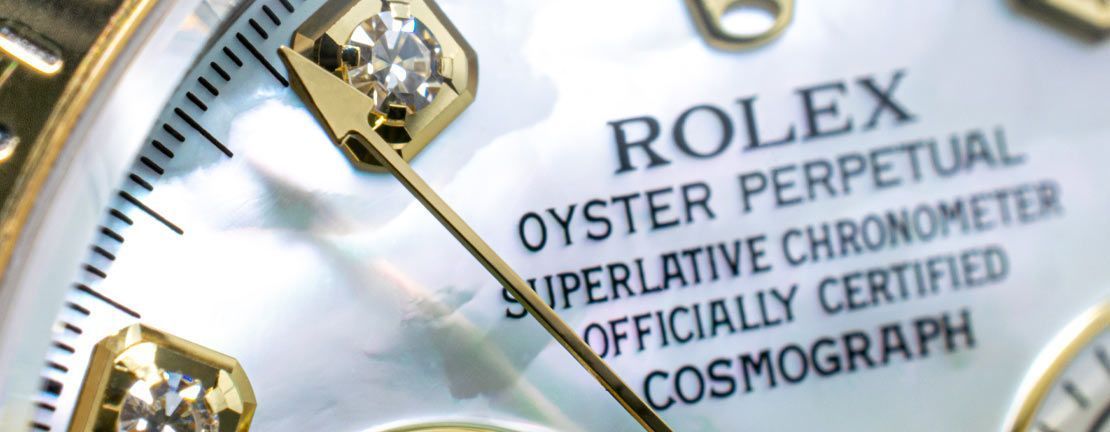

Investment Potential & Value | Rolex
Some view Rolex as a little overpriced in terms of what you receive in exchange for your money - but only when compared to a brand such as Longines, for example, which offers outstanding timepieces not a million miles off the Rolex standard for a fraction of the price.
But the point is moot, as Rolex holds its value so well. Plus, you are getting quality, innovative watchmaking with vertical integration, proprietary materials, exclusive technologies, and the most stringent in-house testing. That’s before even mentioning the heritage and iconic designs.
Branding & Advertising a Key Price Factor
Their pricing is mainly influenced by materials, quality, and innovation, but other factors must also be considered.
Ultimately, someone has to pay for the abundance of event sponsorships and celebrity endorsements (Tiger Woods does not come cheap, after all), and that “someone” we refer to, as always, is the customer.
Again, the point is moot. You may not be getting $15,000 worth of materials and innovation for $15,000 spent, but the price will hold very well and probably increase in value at some point, so what does it matter? Unlike the aforementioned Longines comparison, Rolex will not drop in price by 50% the second you unbox it.
Despite a recent dip after the stunning highs of 2022, Rolex remains a firm blue chip in the watch market, with many models almost certain to appreciate over time.
Investment Potential & Value | Omega
We could almost (but not quite) offer similar sentiments about Omega, although Rolex is a much better investment. Omega watches are not likely to depreciate radically, but they will depreciate, and for many people, that is a deal breaker.
Omega almost certainly offers better value for money in terms of ‘bang for buck,’ as its prices are lower. For example, a middle-of-the-road Omega like the Seamaster Diver 300M currently retails for around $5,000 from an authorized dealer. The closest equivalent for Rolex would be the Submariner, which will set you back around $9,500.
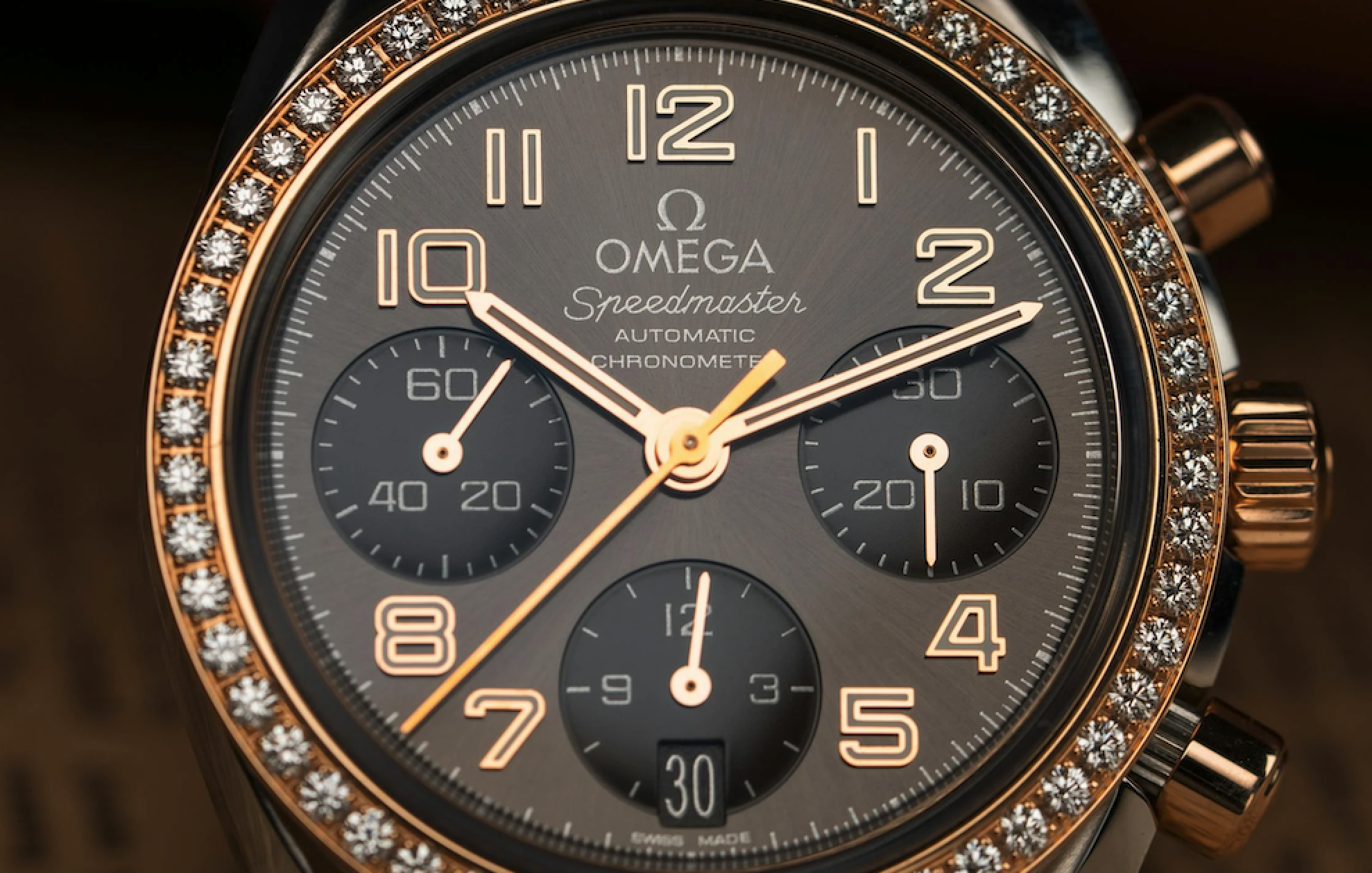

Greater Depreciation
However, the Seamaster will likely depreciate by around 20 to 30% as soon as you part with your hard-earned, while a Submariner will probably hold its price (at worst) or even immediately appreciate (at best).
Both are fabulous investment pieces, but with Omega, a little diligence is required in your selection. If you can get your hands on something like a pre-owned ‘Snoopy,’ you should see a wonderful return later down the line. That's easier said than done, however - if not approaching impossible.
7. Omega vs. Rolex | Model Comparisons
Be advised that prices are approximate, reflecting average authorized dealer prices at the time of writing (September 2024).
| Aqua Terra vs. Datejust | ||
|---|---|---|
| Feature | Omega | Rolex |
| Sizes | 38mm, 41mm | 36mm, 41mm |
| Case Material | Stainless steel, rose gold | Stainless steel, steel + gold options |
| Bezel | Smooth | Smooth, fluted, gem-set |
| Band | Bracelet, leather, rubber | Oyster, Jubilee |
| Water Resistance | 150 meters | 100 meters |
| Movement | Master Chronometer Co-Axial 8800 | Caliber 3235 |
| Retail Price | Starting at $5,400 | Starting at $7,050 |
| Seamaster 300 vs. Submariner | ||
| Feature | Omega | Rolex |
| Sizes | 41mm | 40mm |
| Case Material | Stainless steel, titanium, gold | Stainless steel |
| Bezel | Ceramic | Ceramic |
| Band | Bracelet, leather, rubber | Oyster |
| Water Resistance | 300 meters | 300 meters |
| Movement | Master Chronometer Co-Axial 8913 | Caliber 3130 |
| Retail Price | Starting at $6,500 | Starting at $9,000 |
| Seamaster Diver 300M vs. Sub Date | ||
| Feature | Omega | Rolex |
| Sizes | 41mm | 40mm |
| Case Material | Stainless steel, yellow/rose gold | Stainless steel, yellow/white gold |
| Bezel | Ceramic | Ceramic |
| Band | Bracelet, rubber | Oyster |
| Water Resistance | 300 meters | 300 meters |
| Movement | Master Chronometer Co-Axial 8800 | Caliber 3135 |
| Helium Escape Valve | Yes | No |
| Retail Price | Starting at $4,900 | Starting at $8,950 |
| Seamaster Planet Ocean vs. Sea-Dweller | ||
| Feature | Omega | Rolex |
| Sizes | 39.5mm, 43.5mm | 43mm |
| Case Material | Stainless steel, titanium, gold | Stainless steel, steel + gold |
| Bezel | Ceramic | Ceramic |
| Band | Bracelet, leather, rubber, NATO | Oyster |
| Water Resistance | 600 meters | 1,220 meters |
| Movement | Master Chronometer Co-Axial 8901 | Caliber 3235 |
| Helium Escape Valve | Yes | Yes |
| Retail Price | Starting at $6,200 | Starting at $11,700 |
| Speedmaster vs. Daytona | ||
| Feature | Omega | Rolex |
| Sizes | 42mm | 40mm |
| Case Material | Stainless steel | Stainless steel, gold, platinum |
| Bezel | Aluminum, Ceramic | Ceramic, metal, gem-set |
| Band | Bracelet, leather | Oyster, Oysterflex |
| Water Resistance | 50 meters | 100 meters |
| Movement | Manual-Winding, Automatic | Automatic (70 hours Power Reserve) |
| Retail Price | Starting at $5,250 | Starting at $13,150 |
8. Rolex vs. Omega | Bottom Line
In producing this Omega vs. Rolex guide, our intention is not to baffle or bemuse with painfully complicated technical comparisons. Overindulging in fine details helps no one, and besides, they are not the chief reasons for choosing either brand.
Think of this guide more like friendly, conversational advice presented in general terms from a team that lives, breathes, and sleeps the art of watchmaking.
View our range of pre-owned Rolex watches
View our range of pre-owned Omega watches
This is where the advice ends, however, as buying a timepiece is a personal endeavor. There are plenty of great reasons to invest in either brand, but if you were to force a preference out of us, we would have to lean towards Rolex.
Rolex simply holds better value than Omega, attracts higher resale prices, and maintains a stronger demand in the pre-owned luxury watch market.
If you need a little help making a decision, feel free to contact us by phone or email. We would be happy to answer any questions you might have about Rolex vVs. Omega in an impartial, unbiased manner.

